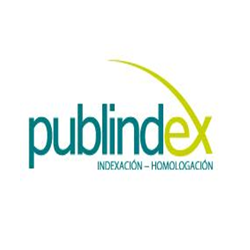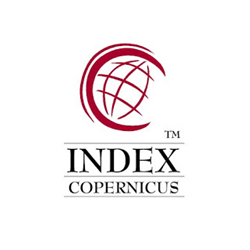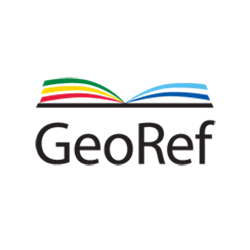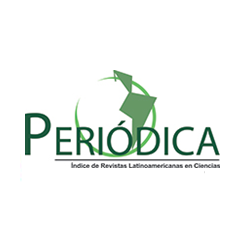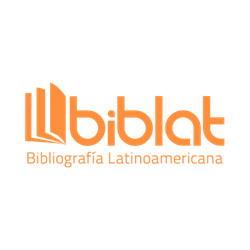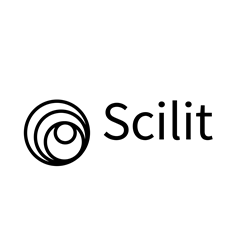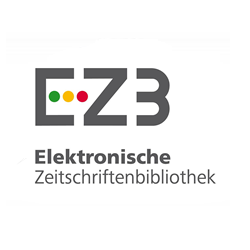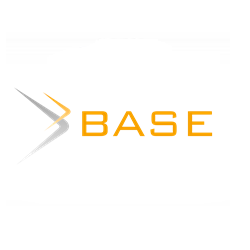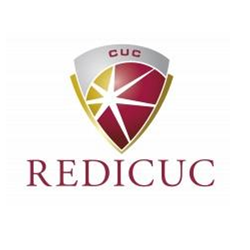Digital geometric definition of metallic scaffolds for potential applications in tissue engineering
DOI:
https://doi.org/10.17981/ingecuc.15.1.2019.02Keywords:
digital model, geometric definition, metallic scaffolds, tissue engineeringAbstract
Introduction: The design of porous structures used as scaffolds in tissue engineering, is directed towards the development of elements that promote bone consolidation processes, stabilizing tissue fragments in conventional biodegradable fixation devices.
Objective: To obtain a digital three-dimensional model for a cellular metal that resembles the cortical and trabecular bone morphology, with characteristics such as geometry, pore size, porosity and skin type coating, as well as providing a basis for the materialization of structures that improve bone regeneration and facilitate the control of the mechanical properties of the scaffold for the biological defects of its application.
Methodology: A parametric 3D modeling code is presented, by means of the definition of a uniform regular geometry with a suitable porosity and pore size, taking into account the essence of the cellular metals and complemented by a skin-like coating body that surrounds the three-dimensional model seeking to elevate the rigidity and mechanical strength of the scaffolding, in addition to making possible the machining of own geometries and allowing isolation and protection for the
cases in which it is required.
Results: The development of two digital models for cellular metals with complex morphological conditions was generated, allowing a good interrelation of geometric parameters for cell proliferation and a favorable response to structural stress in tissue engineering applications.
Conclusions: The designed model demonstrates the possibility of being applied to development of bone fixation alternatives, which decrease the inflammatory response, avoid secondary interventions and reduce the rejection rates of the elements currently used to treatment of musculoskeletal conditions.
Downloads
References
G. Falke, y A. Atala, “Reconstrucción de tejidos y órganos utilizando ingeniería tisular”, Arch Argent Pediatr, vol. 98, no. 2, pp. 103–115, Jan. 2000. Retrieved from: http://evunix.uevora.pt/~fcs/bioh16.pdf
C. García, y D. Ortega, “Elementos de Osteosíntesis de uso Habitual en Fracturas del Esqueleto Apendicular: Evaluación Radiológica", Rev. Chil. Radiol., vol. 11, no. 2, pp. 58–70, Jan. 2005. http://dx.doi.org/10.4067/S0717-93082005000200005
T. Albrektsson and C. Johansson, “Osteoinduction, osteoconduction and osseointegration”, Eur. Spine J., vol. 10, no. 2, pp. 96–101, Oct. 2001. http://dx.doi.org/10.1007/s005860100282
N. Jasmawati, J. Djuansjah, M. Kadir and I. Sukmana, “Porous Magnesium Scaffolds for Bone Implant Applications: A Review”, Advanced Materials Research, vol. 1125, no. 1, pp. 437–440, Oct. 2015. https://doi.org/10.4028/www.scientific.net/AMR.1125.437
M-Q. Cheng, T. Wahafu, G-F. Jiang, W. Liu, Y-Q. Qiao, X-C. Peng, T. Chen, X-L. Zhang, G. He & X-Y. Liu, “A novel open-porous magnesium scaffold with controllable microstructures and properties for bone regeneration”, Sci. Rep., vol. 6, no. 1, p. 24134, Apr. 2016. https://doi.org/10.1038/srep24134
Z. Zhen, T-F. Xi, and Y-F. Zheng, “A review on in vitro corrosion performance test of biodegradable metallic materials”, Trans. Nonferrous Met. Soc. China, vol. 23, no. 8, pp. 2283–2293, Aug. 2013. https://doi.org/10.1016/S1003-6326(13)62730-2
J. Mitra, G. Tripathi, A. Sharma and B. Basu, “Scaffolds for bone tissue engineering: role of surface patterning on osteoblast response”, RSC Adv., vol. 3, no. 28, pp. 11073–11094, 2013. https://doi.org/10.1039/C3RA23315D
K-J. Kim, S. Choi, Y. Sang Cho, S-J. Yang, Y-S. Cho and K. K. Kim, “Magnesium ions enhance infiltration of osteoblasts in scaffolds via increasing cell motility”, J. Mater. Sci. Mater. Med., vol. 28, no. 6, pp. 1–7, Jun. 2017. https://doi.org/10.1007/s10856-017-5908-5
A. R. Boccaccini, U. Kneser and A. Arkudas, “Scaffolds for vascularized bone regeneration: advances and challenges”, Expert Rev. Med. Devices, vol. 9, no. 5, pp. 457–460, Sept. 2012. https://doi.org/10.1586/erd.12.49
V. Karageorgiou and D. Kaplan, “Porosity of 3D biomaterial scaffolds and osteogenesis”, Biomaterials, vol. 26, no. 27, pp. 5474–5491, Sept. 2005. https://doi.org/10.1016/j.biomaterials.2005.02.002
L. D. Albrecht, S. W. Sawyer, and P. Soman, “Developing 3D Scaffolds in the Field of Tissue Engineering to Treat Complex Bone Defects,” 3D Print. Addit. Manuf., vol. 3, no. 2, pp. 106–112, Jun. 2016. https://doi.org/10.1089/3dp.2016.0006
K. Alvarez and H. Nakajima, “Metallic Scaffolds for Bone Regeneration”, Materials, vol. 2, no. 3, pp. 790–832, Jul. 2009. https://doi.org/10.3390/ma2030790
M. Tarik, I. Gibson and X. Li, “State of the art and future direction of additive manufactured scaffolds-based bone tissue engineering”, Rapid Prototyp. J., vol. 20, no. 1, pp. 13–26, Jan. 2014. https://doi.org/10.1108/RPJ-03-2012-0023
J. R. Caeiro, P. González and D. Guede, “Biomecánica y hueso (y II): Ensayos en los distintos niveles jerárquicos del hueso y técnicas alternativas para la determinación de la resistencia ósea”, Rev. Osteoporosis Metab. Min., vol. 5, no. 2, pp. 99–108, Jun. 2013. http://dx.doi.org/10.4321/S1889-836X2013000200007
P. J. Prendergast and P. E. McHugh, “Topics in bio-mechanical engineering”, in 1st Symposium on Biomechanical Engineering, Dublin, Ireland, Nov. 27, 2004.
X-Y. Zhang, G. Fang, and J. Zhou, “Additively Manufactured Scaffolds for Bone Tissue Engineering and the Prediction of their Mechanical behavior: A review”, Materials, vol. 10, no. 1, pp. 1–28, Jan. 2017. https://doi.org/10.3390/ma10010050
G. Maliaris, “Mechanical and fracture behaviour of cellular materials with regular and random lattice structures under various compressive velocities”, in 4th International Conference of Engineering Against Failure (ICEAF IV), Skiathos, Greece, Jun. 24–26, 2015.
J. Banhart, “Manufacture, characterisation and application of cellular metals and metal foams”, Prog. Mater. Sci., vol. 46, no. 6, pp. 559–632, Dec. 2001. https://doi.org/10.1016/S0079-6425(00)00002-5
P. Pinto, N. Peixinho, D. Soares and F. Silva, “Process development for manufacturing of cellular structures with controlled geometry and properties,” Mater. Res., vol. 18, no. 2, pp. 274–282, Apr. 2015. https://doi.org/10.1590/1516-1439.286614
Č. Jaroslav and D. Vojtěch, “Characterization of porous magnesium prepared by powder metallurgy - influence of powder shape”, Manuf. Technol., vol. 14, no. 3, pp. 271–275, Jan. 2014.
M. Velasco y D. Garzón, “Implantes Scaffolds para regeneración ósea. Materiales, técnicas y modelado mediante sistemas de reacción-difusión”, Rev. Cubana de Invest. Biomed., Vol. 29, no.1, pp. 140–154, Mar. 2010. Recuperado de http://www.bvs.sld.cu/revistas/ibi/vol_29_1_10/ibi08110.htm
F. Djamaluddin, S. Abdullah, A. Ariffin, and Z. Nopiah, “Finite element analysis and crashworthiness optimization of foam-filled double circular under oblique loading”, Lat. Am. J. Solids Struct., vol. 13, no. 11, pp. 2176–2189, Nov. 2016. https://doi.org/10.1590/1679-78252844
A. Uzun, H. Karakoc, U. Gokmen, H. Cinici, and M. Turker, “Investigation of mechanical properties of tubular aluminum foams”, Int. J. Mater. Res., vol. 107, no. 11, pp. 996–1004, Nov. 2016. https://doi.org/10.3139/146.111430
N. Chantarapanich, P. Puttawibul, S. Sucharitpwatskul, P. Jeamwatthanachai, S. Inglam, and K. Sitthiseripratip, “Scaffold Library for Tissue Engineering: A Geometric Evaluation”, Comput. Mat. Methods Med., vol. 2012, no. 1, pp. 1–14. Sept. 2012. http://dx.doi.org/10.1155/2012/407805
F. Zwarts, "Size effects in cellular solids", Ph.D. dissertation, Dept. Mat. Nat. Sci. RUG, Groningen, 2007. Retrieved from: https://www.uni-due.de/~hm0014/Cosserat_files/tekoglu_thesis06.pdf
H. Kanahashi, T. Mukai, T. G. Nieh, T. Aizawa, and K. Higashi, “Effect of Cell Size on the Dynamic Compressive Properties of Open-Celled Aluminum Foams”, Mater. Trans., vol. 43, no. 10, pp. 2548–2553, Sept. 2002. https://doi.org/10.2320/matertrans.43.2548
R. Oftadeh, M. Perez-viloria, J. Villa-camacho, A. Vaziri, and A. Nazarian, “Biomechanics and Mechanobiology of Trabecular Bone: A Review”, J. Biomech. Eng., vol. 137, no. 1, pp. 1–15, Dec. 2015. https://doi.org/10.1115/1.4029176
C. Misch, Z. Qu and M. Bidez, “Mechanical properties of trabecular bone in the human mandible: implications for dental implant treatment planning and surgical placement”, J. Oral Maxillofac. Surg., vol. 57, no. 6, pp. 700–706, Jun. 1999. https://doi.org/10.1016/S0278-2391(99)90437-8
F. Warmuth, F. Osmanlic, L. Adler, M. A. Lodes, and C. Körner, “Fabrication and characterisation of a fully auxetic 3D lattice structure via selective electron beam melting”, Smart Mater. Struct., vol. 26, no. 2, p. 025013, Dec. 2017. https://doi.org/10.1088/1361-665X/26/2/025013
Y. Ding, J. Lin, C. Wen, D. Zhang, and Y. Li, “Mechanical properties, in vitro corrosion and biocompatibility of newly developed biodegradable Mg-Zr-Sr-Ho alloys for biomedical applications” Sci. Rep., vol. 6, no. 1, pp. 1–10, Aug. 2016. https://doi.org/10.1038/srep31990
S. Ribeiro-Ayeh, “Finite element modelling of the mechanics of solid foam materials”, PhD dissertation, KTH, Dept. Aer. Veh. Eng., Stockholm, 2005. Retrieved from: http://kth.diva-portal.org/smash/get/diva2:7450/FULLTEXT01.pdf
W. S. Thomson, “On the division of space with minimum partitional area”, Acta Math., vol. 11, no. 1, pp. 121–134, Mar. 1887. https://projecteuclid.org/euclid.acta/1485881153
P. J. Veale, “Investigation of the Behavior of Open Cell Aluminum Foam”, M. S. thesis, Dept. Civil. Env. Eng., Mass. Univ., Amherst, 2010. Retrieved from: https://scholarworks.umass.edu/cgi/viewcontent.cgi?article=1527&context=theses
D. M. Robertson, L. Pierre and R. Chahal, “Preliminary Observations of Bone Ingrowth into Porous Materials”, J Biomed Mater Res., vol. 10, no. 3, pp. 335–344, May. 1976. https://doi.org/10.1002/jbm.820100304
V. Guneta, J. K. Wang, S. Maleksaeedi, Z. M. He, M. T. C. Wong, and C. Choong, “Three-Dimensional Printing of Titanium for Bone Tissue Engineering Applications: A Preliminary Study”, J. Biomimetics, Biomater. Biomed. Eng., vol. 21, no. 1, pp. 101–115, Aug, 2014. https://doi.org/10.4028/www.scientific.net/JBBBE.21.101
F. Bobbert, K. Lietaert, A. Eftekhari, B. Pouran, S. Ahmadi, H. Weinans, and A. Zadpoor, “Additively manufactured metallic porous biomaterials based on minimal surfaces: A unique combination of topological, mechanical, and mass transport properties”, Acta Biomaterialia, vol. 53, no. 1, pp. 572–584, Apr. 2017. https://doi.org/10.1016/j.actbio.2017.02.024.
S. J. Hollister, “Porous scaffold design for tissue engineering”, Nat. Mater., vol. 4, no. 7, pp. 518–24, Jul. 2005. https://doi.org/10.1038/nmat1421
G. Jia, Y. Hou, C. Chen, J. Niu, H. Zhang, and H. Huang, “Precise fabrication of open porous Mg scaffolds using NaCl templates: Relationship between space holder particles, pore characteristics and mechanical behavior”, Mater. Des., vol. 140, pp. 106–113, Feb. 2018. https://doi.org/10.1016/j.matdes.2017.11.064
J. Osorio-Hernández, M. Suarez, R. Goodall, G. Lara-Rodriguez, I. Alfonso, and I. Figueroa, “Manufacturing of open-cell Mg foams by replication process and mechanical properties”, Mater. Des., vol. 64, pp. 136–141, Dec. 2014. https://doi.org/10.1016/j.matdes.2014.07.015
Z. Li and F. Lu, “Bending resistance and energy-absorbing effectiveness of empty and foam-filled thin-walled tubes”, J. Reinf. Plast. Compos., vol. 34, no. 9, pp. 761–768, Apr. 2015. https://doi.org/10.1177/0731684415580329
Robert McNeel & Associates, “Rhinoceros 3D”, noviembre, 2012, [En línea . Disponible en: https://www.rhino3d.com/la/
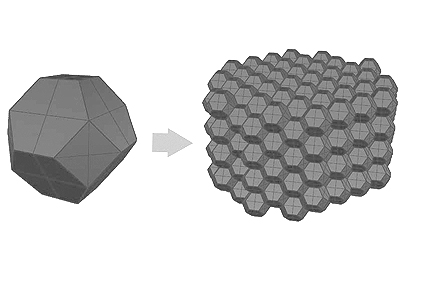
Published
How to Cite
Issue
Section
License
Copyright (c) 2019 INGE CUC

This work is licensed under a Creative Commons Attribution-NonCommercial-NoDerivatives 4.0 International License.
Published papers are the exclusive responsibility of their authors and do not necessary reflect the opinions of the editorial committee.
INGE CUC Journal respects the moral rights of its authors, whom must cede the editorial committee the patrimonial rights of the published material. In turn, the authors inform that the current work is unpublished and has not been previously published.
All articles are licensed under a Creative Commons Attribution-NonCommercial-NoDerivatives 4.0 International License.


 English
English
 Español (España)
Español (España)

